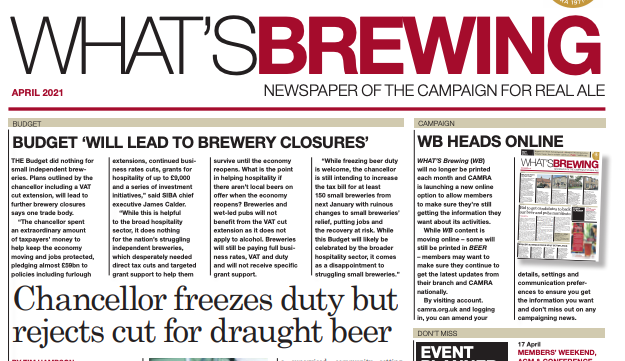Encouraging growth in cask ale
Audio Description
Login here to listen to the audio description

A 10 per cent increase in the cask ale brewed by Britain’s independent brewers over the past year highlights an opportunity, according to a new report.
The SIBA Beer Independent Beer Report 2024, published by the Society of Independent Brewers and Associates, found members reported a 14 per cent increase in beer volumes brewed overall in 2023. This marks a return to pre-pandemic brewing levels for the first time in four years. Within this overall growth, cask beer grew year-on-year from 53 per cent of total beer volumes brewed by SIBA members to 63 per cent.
At the launch at Sambrook’s brewery in Wandsworth, South London, report author Caroline Nodder (above right) said: “With the on-trade back after the Covid lockdown, it seems the consumer hasn’t fallen out of love with cask ale. Where you see reports of cask in decline, that’s the big brewers’ brands in decline.”
She added that “more SIBA members have taken on their own pubs than ever before”, in the past year, with 27 per cent now operating a standalone local rather than simply a taproom. The cask market “is very much about a local brewer selling to local people in a local pub, and independent brewers have the opportunity to become the champions of cask,” said Nodder.
SIBA chief executive Andy Slee (above left) said: “Let’s recognise that the global brewers have walked away from the cask ale sector, so we’re not going to get leadership from there. If cask ale is going to survive and thrive, it will be through local, independent breweries. The number of brewers that are reporting cask beer growth is really encouraging.”
However, Slee acknowledged there are also clear challenges for smaller brewers - 43 per cent cite survival as their top priority, although this is down 20 per cent from last year.
While total brewery numbers declined by less than one per cent last year, according to SIBA’s Brewery Tracker survey, media reports of a crisis facing pubs and brewing “mean we’re in danger of talking ourselves down as a sector”, said Slee. SIBA’s survey found many brewers with potential for growth are struggling to access finance due to banks’ negative perception of the sector.
He believes a lack of marketing support for the cask category from major brewers is “both a problem and an opportunity. I know there are independent brewers talking about ways that they can combine forces in order to promote cask, and SIBA can facilitate that.
“If the Covid lockdown taught us anything, it’s that people want to go out and socialise, and they want to support local, independent businesses. By buying locally brewed cask ale, they can do both. There is a really strong franchise for local beer.”
Slee cited his recent conversation with an independent Lake District brewer which has seen a large increase in demand, following the closure of the Jennings brewery in Cockermouth by Carlsberg Marston’s in 2022. “Their customers want a genuinely locally brewed cask ale and understand the difference.”
However, Sambrook’s founder Duncan Sambrook highlighted a difference in consumer support for cask in rural areas, and the experience of urban breweries such as his own. “We’re actually still finding cask difficult. Where we’re seeing growth is in craft keg, which is a market that has been pretty much driven by urban consumers.
“Trying to get buy-in from cask from publicans in the London market is a challenge. But if you look at what brewers like Timothy Taylor and St Austell are doing, there is an opportunity. Their beers are going well in London, and I think more cask brewers can follow their example, in terms of focusing on aspects like the quality of the pour and the visual impact of pump clips.”
Justin Hawke, owner and head brewer of Bristol-based Moor Beer, sounded a cautiously optimistic note. “Cask is getting some of its strength back, which is great to see. In some national and regional pubcos, such as Greene King, you definitely see more guest cask beers and local brewers, alongside their own beers. Our focus has always been on cask brewing, and we can definitely brew more if we’re asked.”
A YouGov consumer survey for the SIBA report found:
- 55 per cent of beer consumers drink local craft beer, level with the 55 per cent who drink global beers
- beer drinking is most prevalent among 45-54-year-olds, with 56 per cent in that group saying they drink it
- just 30 per cent of 18-24-year-olds ever drink beer, falling behind wines and spirits
- almost a quarter of consumers, 24 per cent, say they never visit their pub
- while 37 per cent of all beer drinkers say they drink cask ale, this falls to 16 per cent of 18-24-year-old beer drinkers
- 45 per cent of male beer drinkers drink cask, compared to 22 per cent of women.

 view archive
view archive
 view events
view events